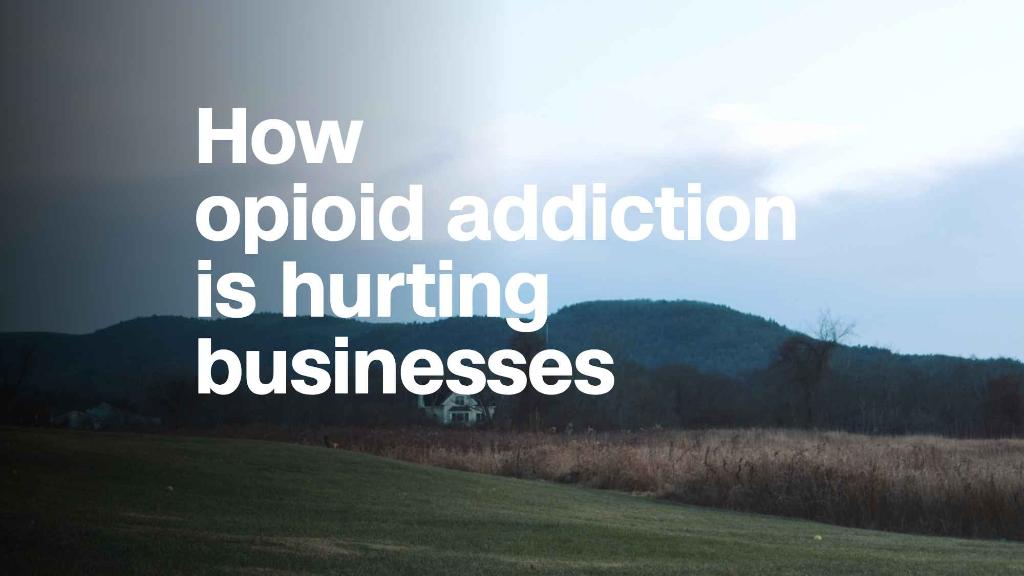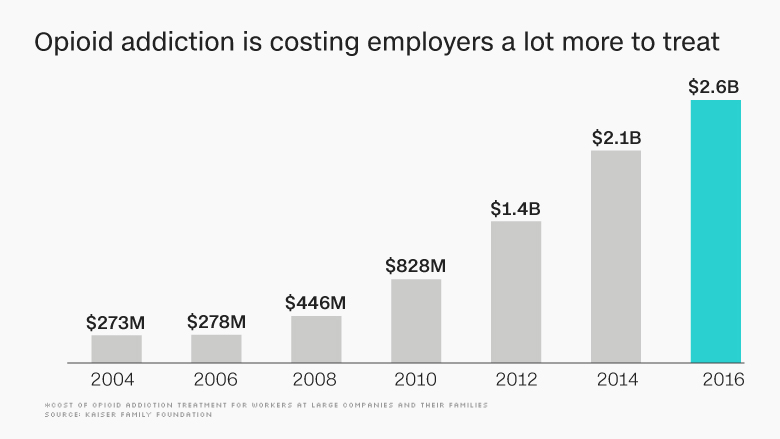
The cost of treating opioid addiction among American workers and their families has skyrocketed in recent years, a new study has found.
People covered by employer health insurance received $2.6 billion worth of treatment for opioid addiction and overdoses in 2016, up from $273 million in 2004, according to a report published Thursday by the Kaiser Family Foundation. Some $2.3 billion was covered by insurance, while patients shelled out $335 million.
Just over half the spending was for the treatment of workers' children, while just under a third was for the employee themselves. The rest covered spouses' treatment.
The report provides yet another data point on the toll opioids are taking on American life. The Trump administration, lawmakers, governors and many others are looking for ways to curb the epidemic. The head of the US Food and Drug Administration, Scott Gottlieb, told CNN's Sanjay Gupta Wednesday that doctors should undergo mandatory training on pain management and the prescribing of painkillers. Also, Congress has held numerous hearings and introduced legislation hoping to address the problem.
Related: This is how lawmakers plan to end the opioid crisis
Roughly $1.3 billion was spent on outpatient treatment in 2016, with the average expense coming in at $4,700, according to Kaiser. Employees footed $670 of that bill.
Some $911 million went toward inpatient care, which cost $16,100 on average. Workers were responsible for a little more than $1,600. Prescription drugs used for treatment cost $435 million.

These figures include only payments for treatment covered at least in part by insurance, not services that are fully paid for out-of-pocket and not billed to insurance. So it's likely the full cost of treatment is even higher, Kaiser notes. The report analyzed claims from employers with more than 1,000 workers.
The spending spike on opioid treatment comes even as the use of painkillers has declined.
Related: Opioid crisis fast facts
In 2016, only 13.6% of enrollees had a opioid prescription, down from a peak of 17.3% in 2009 and 15.7% in 2004. Some of the steepest reductions were among people with complications from pregnancy or childbirth, musculoskeletal conditions, cancer and injuries.
People ages 55 to 64 had the highest share of opioid prescriptions, and women were somewhat more likely to have received a painkiller prescription than men. Opioid prescriptions were also more common in the South than in the West or Northeast.
In total, large employers and their enrollees spent $1.4 billion on prescription painkillers in 2016, down 27% from the 2009 peak. Workers paid a total of $263 million for the medications.


